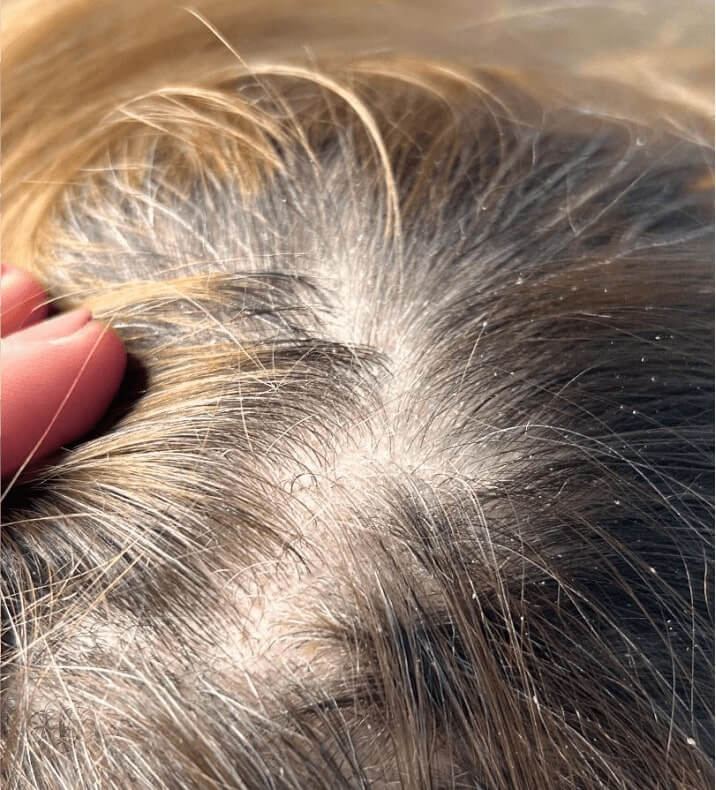Home » Dandruff and Seborrheic Dermatitis Treatment
Dandruff and Seborrheic Dermatitis Treatment in NYC
Schedule a Consultation
What is seborrheic dermatitis?
Seborrheic dermatitis is a common, noninfectious skin condition. It is a form of dermatitis or skin inflammation that causes itchy, red patches or oily scales on the skin. It also causes white or yellowish crusty or powdery flakes on the scalp, known as dandruff.
Dandruff is a symptom of seborrheic dermatitis, which makes the scalp dry and itchy. Seborrheic dermatitis can occur on any oily part of the body, including the face, eyebrows, eyelids, around the nose, ears, and upper chest. But dandruff is found only on the scalp.

How do dandruff and seborrheic dermatitis present?
The exact cause of seborrheic dermatitis and dandruff is unknown. However, the following factors can increase the risk of seborrheic dermatitis and dandruff in people:
- Overgrowth of a fungus called Malassezia or Pityrosporum. This is not an infection, but rather a fungus that usually resides on human skin.
- High levels of hormones called androgens
- High levels of natural fats or lipids in the skin
- Inflammatory reaction
- Oily skin
- Family history of seborrheic dermatitis
- Stress
- A cold and dry climate
- Use of alcohol-based creams or cosmetics
While symptoms can vary from person to person, including bumpy, oily, red, scaly, or itchy skin, some people may have painful, cracked patches of skin. Others may have dandruff or white or yellow flakes, scales, or crusts on their scalp. They may also have itchy, white flaky skin on their eyebrows and facial hair.
People may also have blepharitis or scaly redness along the eyelid edges. Some may develop pink-colored plaques or patches of thick skin on the sides of their face. Others may experience redness near their armpits, genitals, or under the breasts, although this is not as common.
In infants, seborrheic dermatitis is called cradle cap. It leads to crusty scales on an infant’s head. It doesn’t itch, but scratching it can cause bleeding or mild infection.
In severe cases of seborrheic dermatitis hair loss may be lost.
How are dandruff and seborrheic dermatitis diagnosed?

Skin doctors or dermatologists diagnose dandruff and seborrheic dermatitis by checking the symptoms and medical history. They also take a family history, as seborrheic dermatitis may be hereditary. The doctor will conduct a physical examination to check the affected skin. Sometimes, they may require a skin biopsy. They take a skin sample from the affected area to study the skin cells and confirm the diagnosis.
What other conditions may mimic dandruff and seborrheic dermatitis?
The symptoms of dandruff and seborrheic dermatitis may mimic other skin conditions. A qualified healthcare professional can distinguish between similar skin conditions and make the correct diagnosis.
The following skin conditions are often mistaken for dandruff and seborrheic dermatitis:
- Psoriasis:Psoriasis is a skin condition that causes patches of red skin with scales or flakes on the scalp and back. However, the scales in psoriasis have well-defined edges and are thicker than those seen in seborrheic dermatitis. Psoriasis also causes silvery scales instead of the small white or yellow scales found in dandruff.
- Contact dermatitis: A type of dermatitis caused by an allergic reaction, contact dermatitis causes bumps and blisters instead of scales seen in seborrheic dermatitis.
- Eczema or atopic dermatitis:Eczema or atopic dermatitis appears as fine, white, dry scales rather than oily, yellowish, or white scales of seborrheic dermatitis.
- Rosacea:Rosacea causes redness, bumps, and blisters instead of scales.
- Dermatomyositis:Dermatomyositis appears as a dark red or violet rash, differentiating it from seborrheic dermatitis.
- Tinea capitis:Tinea capitis symptoms resemble seborrheic dermatitis and dandruff, but this fungal infection is characterized by also causing hair loss.
- Systemic lupus erythematosus (SLE): SLEcauses a butterfly-shaped rash on the face on the sides of the nose, differentiating it from seborrheic dermatitis.

What are the treatment options for dandruff and seborrheic dermatitis?

Dandruff and seborrheic dermatitis treatment depends on the symptoms, age, and severity of the condition. Treatment includes gently applying the following medicated products to the affected skin:
- Creams, body washes, or shampoos containing antifungal medicines like selenium sulfide, ketoconazole, fluconazole, or ciclopirox
- Creams or shampoos with zinc pyrithione, salicylic acid, or coal tar
- Creams or body washes with the antibiotic sodium sulfacetamide
- Creams or ointments containing corticosteroids such as hydrocortisone or fluocinolone acetonide
- Creams or ointments containing calcineurin inhibitors like pimecrolimus or tacrolimus
- In severe cases, oral antifungals (usually Fluconazole or Itraconazole) may be given to prevent recurrences.
Seborrheic dermatitis and dandruff can be chronic or long-term conditions that may come and go. The doctor may recommend using medicated shampoos, creams, body washes, or ointments once or twice a week, depending on the severity of the condition, to prevent the worsening or recurrence of symptoms.
Are there some natural solutions to treat dandruff?
Reducing stress levels, an increase of sleep time, and eating more fruits (antioxidants) have been shown to help patients with seborrheic dermatitis. Apple cider vinegar and tea tree oil have demonstrated efficacy against seborrheic dermatitis.
Why choose us
Dermatology Circle PLLC, under the direction of Dr. Viktoryia Kazlouskaya, a board-certified dermatologist, offers full-spectrum medical and cosmetic dermatology solutions. With nearly two decades of experience, Dr. Kazlouskaya has extensive experience in treating seborrheic dermatitis and dandruff. In fact, she was among the first dermatologists to offer off-label systemic antifungal treatments for patients with severe seborrheic dermatitis unresponsive to conventional treatments.
Contact us to schedule a consultation and begin your dandruff and seborrheic dermatitis improvement today.


Publications and congress presentations by Dr. Kazlouskaya (in Russian):
- Kazlouskaya V. Itraconazole use in seborrheic dermatitis. Medical panorama (Minsk). 2007;4(72):32-35.
- Valles-Kazlouskaya V. Malassezia yeasts in the skin of healthy adults, and patients with seborrheic dermatitis, sebo-psoriasis and atopic dermatitis. Medical panorama (Minsk). 2007;12(80):31-33.
- Adaskevich UP, Valles-Kazlouskaya V. Malassezia yeasts and their role in the development of inflammatory skin conditions. Siberian journal of dermatology and venereology (Russia). 2007;8:11-15.
- Adaskevich U, Valles-Kazlouskaya V. Aspects of treatment of seborrheic dermatitis. Natural dermatology and cosmetology. Practical journal (Minsk). 2005;4:5-7.
- Adaskevich U, Kazlouskaya V. Aspects of treatment of Malassezia-associated conditions. Zdravoohranenie (Minsk). 2005;5:22-24.
PHONE
ADDRESS
801 Madison avenue, 4th Floor, NY – New York, NY, 10065
OPENING HOURS
Monday 9AM-5PM
Tuesday 9AM-5PM
Friday 10AM-6PM
Every other Saturday 9AM-2PM (please, call in advance)
